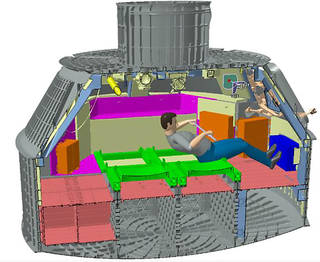Learning how to keep humans healthy while they’re in space is essential for future missions into deep space. Onboard the International Space Station (ISS), this is a major area of study. Astronauts exercise daily in the orbiting laboratory.
NASA’s new crew module that will take humans into deep space is the Orion spacecraft. After its first unmanned mission in 2018 during which it will fly deeper into space than any human-rated spacecraft has ever gone, humans will travel in the Orion spacecraft.
A new exercise device for maintaining astronaut health while onboard Orion is being developed by Zin Technologies in Ohio. It’s called ROCKY, or the Resistive Overload Combined with Kinetic Yo-Yo device. It will be used for aerobic activity as well as strength training.
The exercise equipment for astronauts on the ISS takes up approximately 850 cubic feet in the form of a treadmill, resistive exercise device and cycle ergometer. Roughly the size of a large shoebox, ROCKY will take up around 1 cubic foot, and will weigh only 20 pounds! For perspective, the equipment for exercising on the ISS weighs more than 4,000 pounds.
ROCKY can be customized for astronauts. It will allow them to perform upper body exercises in addition to squats, deadlifts and heel raises. It is specially designed to give astronauts the impression that they are using free weights, a feature developed by TDA Research through NASA’s Small Business Innovation Research Program.
The seats will collapse inside the spacecraft to provide more room for the astronauts. Inside the Orion spacecraft, the new device will be positioned close to the side hatch.
In addition to maintaining their physical health in space, it’s important that astronauts are strong enough to exit the Orion module on their own in the unlikely scenario that they land off course after returning from space.
ROCKY will undergo refinements during the next few years to give it more capabilities for use in near-term missions and possibly longer-lasting missions.
NASA’s Orion crew vehicle completed a successful test flight in 2014. It’s next mission is known as EM-1, or Exploration Mission-1. During EM-2 and future missions, Orion will be manned. The capabilities of the crew module will enable the exploration of deep space by humans in a variety of environments including cislunar space and eventually Mars.
For an overview of the Orion spacecraft, check out NASA.gov.


